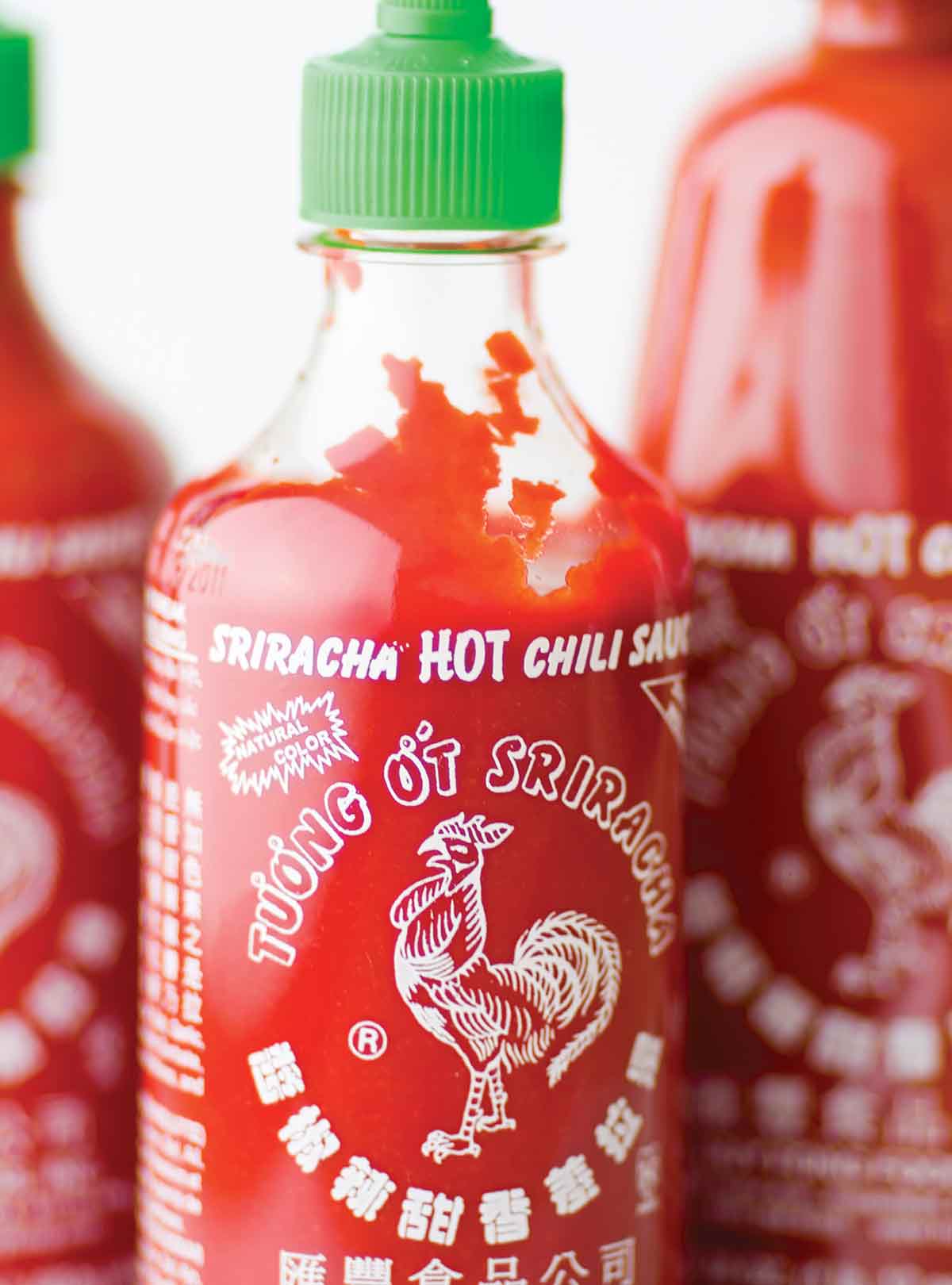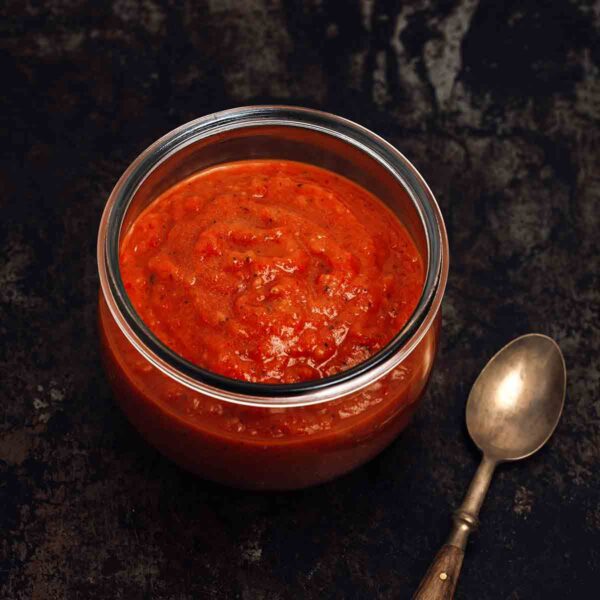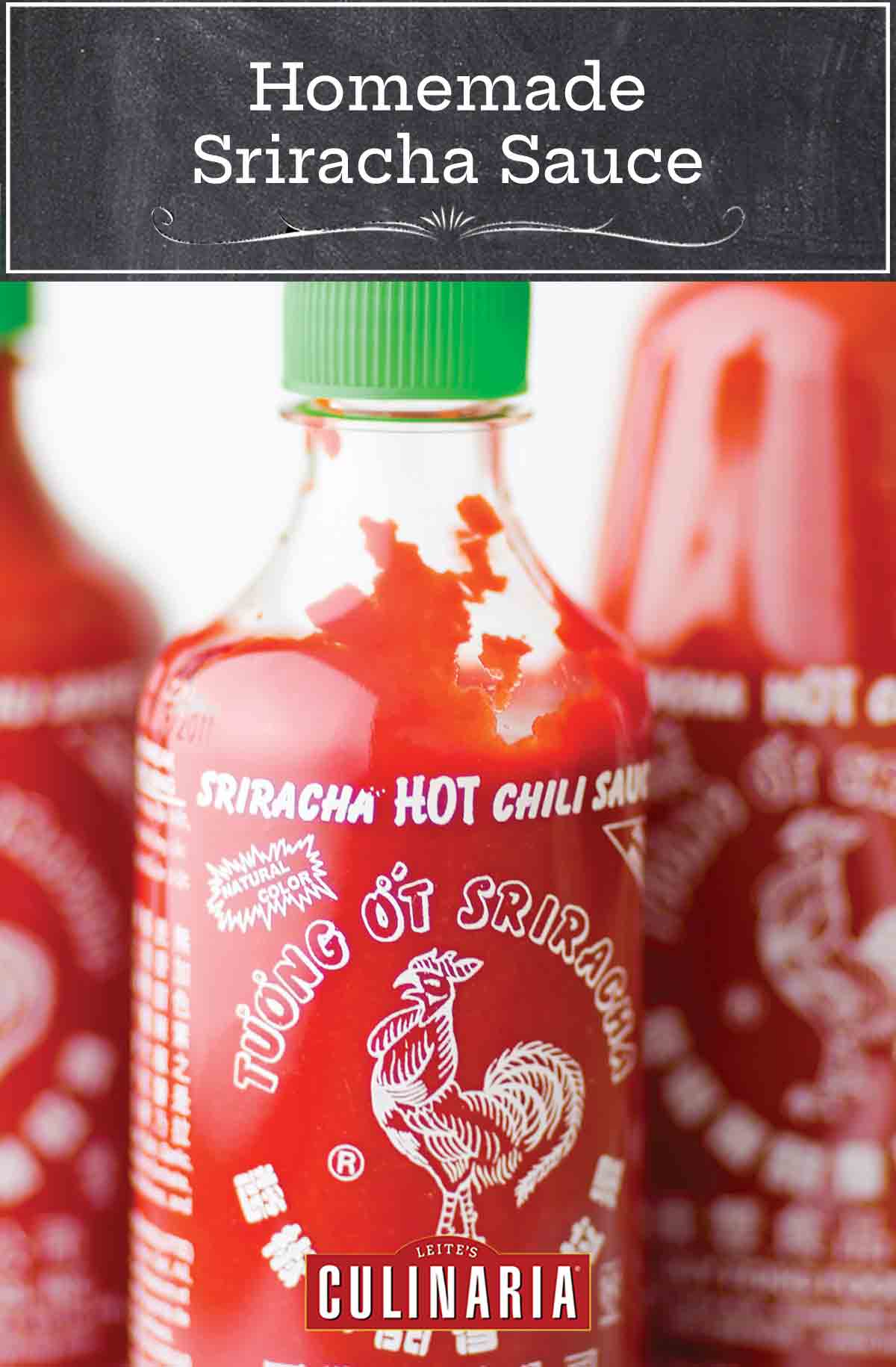
“There are those of us who love Sriracha, and then there are those of us who need Sriracha,” observes Randy Clemens, author of this recipe. If, like Clemens, you find yourself in the latter category–which essentially means you rely on the not-quite-incendiary condiment as a tool in your kitchen arsenal–your culinary curiosity probably knows no bounds. But it should know how to make this hot sauce from scratch.–David Leite

Want to Save This?
Homemade Sriracha Sauce FAQs
Sure, you can just whiz up all those ingredients and start slapping it on everything. But a 7-day ferment does a couple of things. If you’ve been paying attention to the recent fermenting craze, you’ll know that it adds another layer of flavor, extra depth, and complexity.
Fermentation also tends to mellow out the heat of the peppers, so the sauce isn’t just about the heat but about the melded flavors, too.
And finally, there is the argument that fermentation is just better for you, your guts specifically. Patience is a virtue, indeed.
You can embolden just about anything with a dose of Sriracha, stirring it into ketchup, mayo, butter, cream cheese, honey, or sour cream. We also love it mixed into Sriracha deviled eggs, slathered on hot wings, and tossed with spicy roasted sweet potatoes. The options are truly endless.

Homemade Sriracha Sauce
Ingredients
- 1 3/4 pounds red jalapeño peppers, stems removed and halved lengthwise
- 3 garlic cloves
- 2 tablespoons garlic powder, (optional)
- 2 tablespoons granulated sugar, plus more as needed
- 1 tablespoon light brown sugar
- 1 tablespoon kosher salt, plus more as needed
- 1/2 cup distilled white vinegar, plus more as needed
- Water, as needed
Instructions
- Transfer to a glass jar, seal, and store at room temperature for 7 days, stirring daily. (It may get a little fizzy; that's to be expected.)
- After 1 week, pour the chile mixture into a small saucepan over medium heat. Add the vinegar and bring to a boil. Lower the heat and simmer gently for 5 minutes. [Editor's note: If you'd like to preserve the gut-friendly bacteria that has been brewing in your hot sauce, skip the simmering step and purée the pepper mixture and vinegar together in the next step.]
- Let the mixture cool and then purée it in a food processor for 2 to 3 minutes, until a smooth, uniform paste forms. If the mixture is too thick to blend properly, add a small amount of water.
- Pass the mixture through a fine-mesh strainer. Press on the solids with the back of a spoon to squeeze out every last bit of goodness you’ve been waiting a week to get.
- Taste and adjust the seasoning and consistency of the final sauce, adding additional vinegar, water, salt, granulated sugar, or garlic powder to suit your taste. Transfer to a glass jar, close the lid tightly, and refrigerate for up to 6 months.

Nutrition
Nutrition information is automatically calculated, so should only be used as an approximation.
Recipe Testers’ Reviews
For folks who like to prepare their own condiments, this is a distinctive, amazingly colored hot sauce. But watch for spills! Though you may enjoy them as blood-red badges of brewing honor, left on the counter or floor too long, they’ll stain.
I used Fresno Reds, which are ripened green jalapeños. I halved the main recipe (using 12 to 15 peppers) and used dark instead of light brown sugar. I also wore latex gloves as I prepared the recipe (from experience, gloves save a lot of accidental ocular anguish). The recipe is simple to follow, since the processor and room-temperature storage do most of the work.
Processing didn’t create a paste, however, as the recipe indicated, it was more of a slush. Take care when opening the glass jar to stir; whiffs of the stuff can make you cough and sneeze. (You’ll also smell it for hours after you reseal the jar.) I bought a bottle of the original Sriracha with the rooster on the label to compare: The original tasted richer and aged but strong—a second of sweet pepper taste on the tongue, then a slow burn. I didn’t adjust the seasoning on my homemade sauce; it tasted only a tad milder than the original.
Mixing the sauce with Trader Joe’s organic ketchup was a nice balance for me, sweetening the sauce and bringing out flavor over heat. This would be great with fries or scrambled eggs. I tried it with hardboiled eggs, but the taste was lost. It’s probably better as a fry or veggie dip.
I enjoy recipes that remind you of how easy it is to make something that you might not think about making. Compared to commercial Sriracha, my homemade version had more heat and more garlic flavor. I’m not a five-pepper, sweat-in-the-corner type of guy, but I enjoy a little pain on the tongue, and the sauce’s heat in relationship to the flavor of the peppers was just right.
However, the garlic flavor was a bit too strong, and the aftertaste detracted from the overall flavor. I’d consider reducing the amount of powder next time or just using garlic cloves. The homemade sauce is also runnier, but that’s expected because there’s no gum in it like the commercial brand.
My other quibble is the need to use (and wash) a food processor twice. Would it really harm the recipe to puree the heck out of the mixture in the beginning, and then just strain it after adding the vinegar and cooking?
My version of this sauce used cayenne chili peppers, with the majority of the seeds removed. They worked very well and yielded a slightly thickened, orangey-red sauce with a fair kick.
It has a nice tang to it, and a rich, garlicky heat that doesn’t persist. It’s great for wings or any occasion that requires a good hot sauce. It took a little elbow grease (about 10 minutes worth) to get the last of the hot pepper purée to go through the sieve. I persisted because that’s how I got any thickness to it at all.
I made this sauce as written, and patiently waited a week to do a side-by-side tasting with the commercial version. The result? It’s a wonderful sauce that’s brighter, more complex, and less salty than the bottled version. It’s absolutely wonderful.
Is it worth it? That’s up to you. The hardest part of this recipe is passing the mixture through a fine mesh strainer. If you want whole pepper seeds in your sauce, you can skip it, but if you want anything resembling the seed-free original sauce, resign yourself to a nice, long session with your strainer. You really have to work this and mash as much through the strainer as you can—long after you want to call it quits—to get everything out of this sauce.
This gets a thumbs-up for its bright pepper flavor.
As for preparing the sauce, it’s very easy: I pulsed the peppers in three batches, adding the next batch to the food processor when the paste formed to make room for all of the peppers.
But it loses points for lacking depth and for being thin. We did a side-by-side comparison to the Rooster brand sauce, which has more body, is thicker, and has a somewhat smoky taste. This recipe also was spicier than the Rooster sauce—I like a little zing although this was sizzling. It’s a good sauce, but it’s not my first choice if I were to pick between it and the Rooster brand.













Anyone tried any variations on this? Ginger, lemongrass, tamarind? Can’t wait to get into it….
Let’s find out…anyone?
Does anyone know about how many ounces this recipe yields?
Kerrie, our testers’ yields varied slightly, but most were just less than 2 cups, which if I am not mistaken translates to about 16 fluid ounces.
Would it be safe to can in small jelly jars? I’m the one that will eat it. And would like to use fresh peppers while in season here. Thanks
Hi Karen, I asked one of our experienced canning testers and she thinks that you could probably use the hot water bath method for canning as the recipe is fairly acidic. I always recommend that people consult the National Center for Home Food Preservation for more detailed information. Remember too that the recipe keeps for 6 months in the refrigerator. Hope this helps!